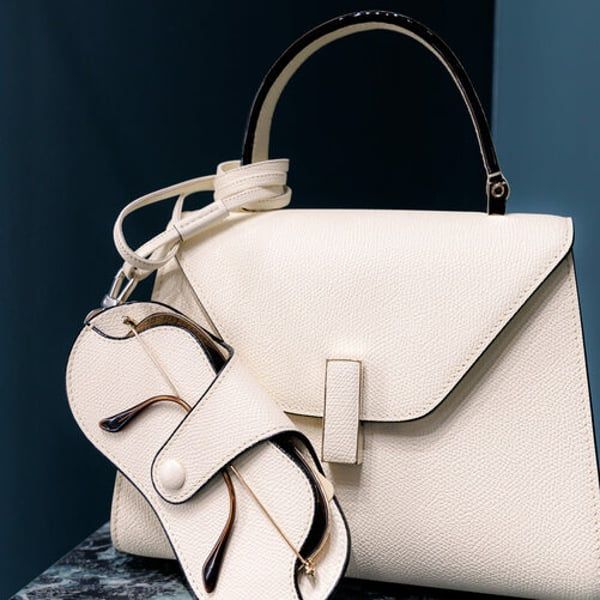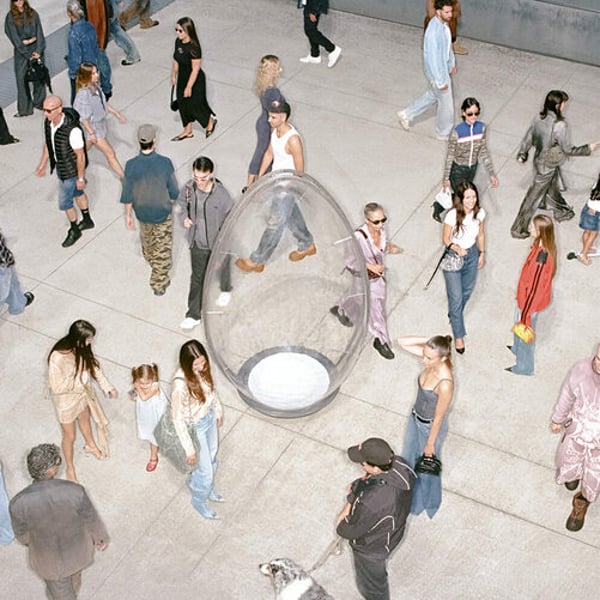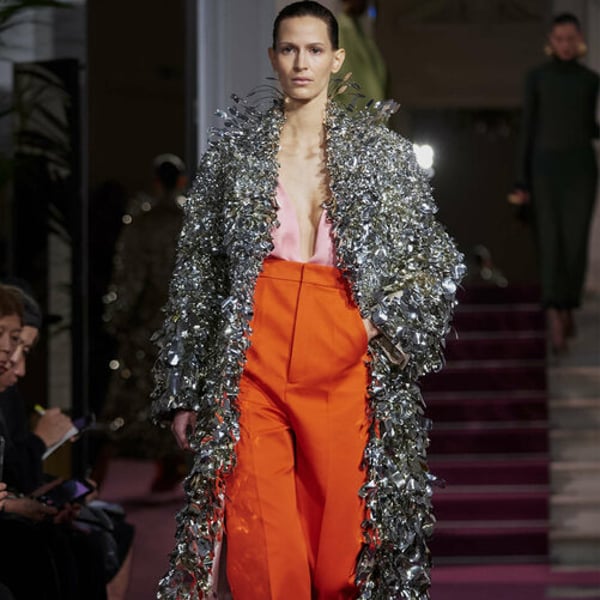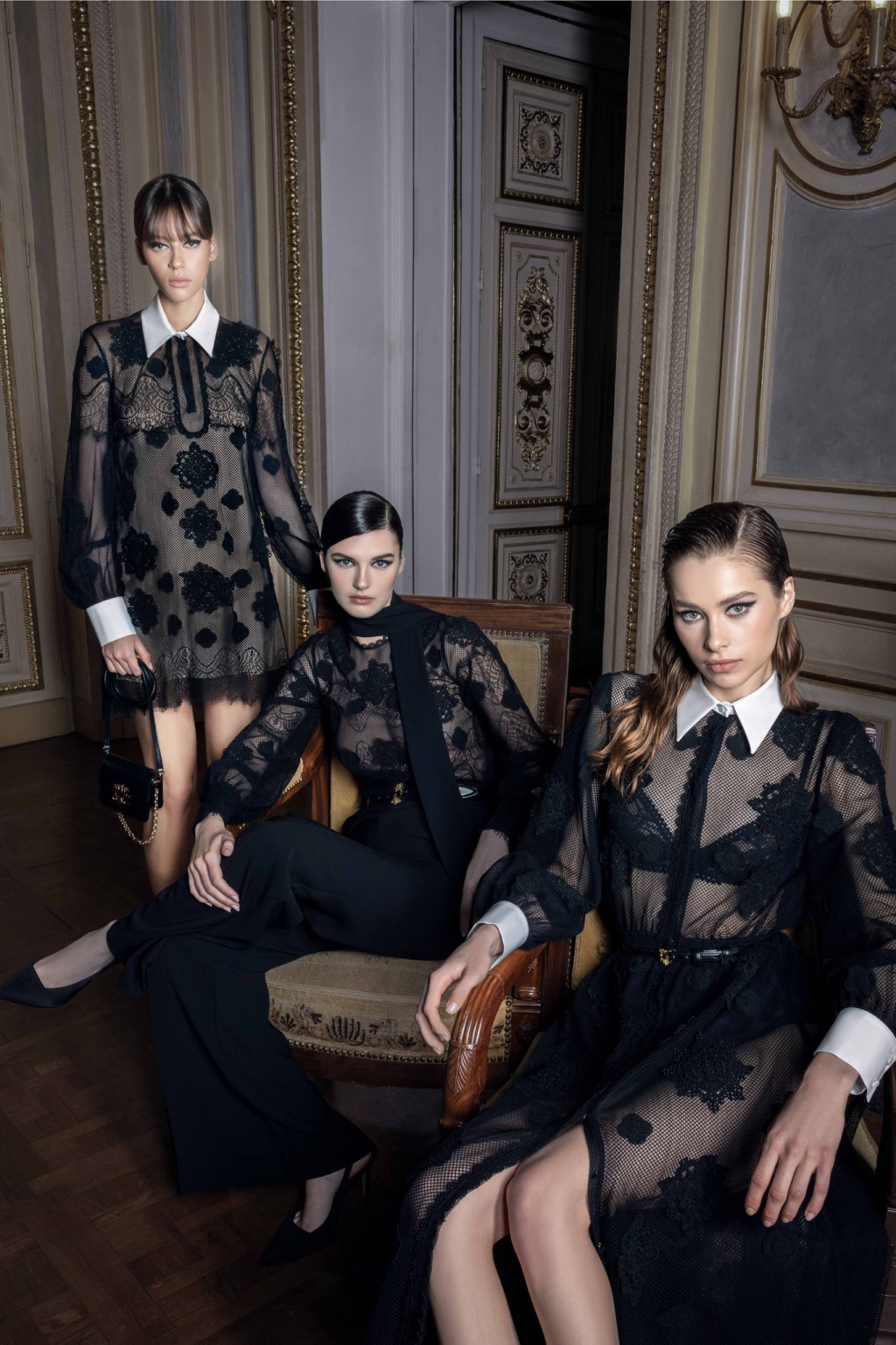When Valextra celebrated its new Paris boutique on Wednesday night, it marked the latest development in a stunning revival of the Milanese brand by Neo Investment Partners, the savvy investment firm run by Victoria Beckham.
Founded by Frenchman David Belhassen, Neo has had a remarkable decade: acquiring and building Valextra into Milan's most popular luxury accessories brand; buying a third of Victoria Beckham, where he almost tripled income and returned the house to profitability; and bring Vuarnet out of near-bankruptcy and sell it to luxury emperor Bernard Arnault LVMH this spring.
“We like to take small brands with huge potential, great DNA and strong, strong storytelling, and then rebuild them. Most of the time with the creative founder, working with him to make his creative vision a reality. Never too fast, never rushed, to make sure we are consistent and truly connected to the DNA of the brand. That’s the most important point,” Belhassen explained in a conversation at Valextra’s boutique cocktail bar.
Neo first bought Valextra in 2013, Belhassen recalls, when “it was a small brand earning only €6 million. At the time, it was under the ownership of an extraordinary man, Signor (Emanuele) Carminati, who had beautifully recovered it from scratch. Valextra is truly a jewel for Milan, born in 1937 by Giovanni Fontana, who manufactured functional bags that were very advanced for their time. Connected with the entire architectural world of Italy at that time.”

Note that the company's main plant in Rho, west of Milan, has its own museum with dozens of patterns made with other designers over the years.
Belhassen therefore sees Valextra's creative community as the key to its future. Over the years, Apple's Steve Jobs and Johnny Ives became Valextra collectors, as did architects Kengo Puma and John Paulson, industrial designer Martino Gamper and even the Agnelli family, purchasing wallets, bags or briefcases.
“That's where Valextra comes from: Monsieur Fontana's idea of a very functional, unique and minimalist beauty, and never with a logo. That's the DNA we wanted to buy. It's like the beautiful and cold architecture of Milan, where the courtyard is beautiful with beautiful balconies and gardens. That's Valextra! enthuses this French businessman.
So when they relaunched Valextra, they hosted a small dinner at the brand's elegant flagship on via Manzoni on the last day of the Salone del Mobile, Milan's gigantic design fair.
“There are no fashion people, only designers. We invited 25 guests and 100 came and stayed until 5 in the morning. We started this community and realized that as long as the first circle likes you, you're fine! But if you get too far away from them, then you won't be. And that’s what Xavier has been doing,” she recalls with a laugh.
Eventually, a Valextra store designed by Paulson and another with Puma emerged that night; while Gamper created a famous magnetic installation for bags and small leather goods to adhere to Kevlar panels.

Since then, led by CEO Xavier Rougeaux, Valextra has focused on Japan, where, without distributor intermediaries, it has opened 21 stores, creating its largest market.
“Our key strategy with small brands is to focus. You can't do everything at the same time. You don't have the means, the people or the resources. You don’t want to dilute your strength,” she argues.
It started in Isetan's men's department in Tokyo and then expanded to Kyoto with a Casa Valextra, combining Italian design items with local artisanal products in a two-story former tea house. Back in Europe, Valextra opened in Mount Street, London and now Paris, using its signature dark midnight green on the exterior. One shade Rougeaux highlights was inspired by the unique color of Lake Como, a mix of mountain green and deep blue.
“What I like about Japan is that they are very demanding and perfectionists. And they understand that Valextra is the best quality there is,” exclaims Belhassen, noting that it now competes with the most popular bag brands, from Celine to Loewe.
Valextra, a booming “super profitable” brand, will reach €80 million in revenue this year, Belhassen predicts. Not bad for a decade.
As for Vuarnet, which Neo bought out of bankruptcy in 2014 and then sold last September, Belhassen warns: “I can tell you who I sold it to, LVMH, but not for how much. It was a fantastic story for us. But when you sell a brand, you have to respect the NDA.”
Industry estimates put the sale of Vuarnet at 40 million euros.
Belhassen met Jean Vuarnet, the ski champion who won downhill gold at the 1960 Winter Olympics in Squaw Valley, California, and founded the brand the following year, just before he died.
“He was very happy with the idea of someone taking over his brand. We had to clean it first though. I had keychain licenses and cooler bag licenses, oh my goodness! Belhassen said, emphasizing that the growth first took off through a big advertising campaign with Vincent Cassel, and then exploded when Daniel Craig started using Vuarnet as James Bond.
“Daniel called me and asked if he could use Vuarnet for a Bond film and I told him right away that we had no budget. But he said, 'I just want to use them,' and he did. Free!” Belhassen marvels.
Vuarnet was sold mainly in wholesale opticians with 3,000 doors and only two flagships, in central Paris and Nolita, in New York. Although blessed with super-rapid e-commerce growth in the US, with a hefty price tag of over $300, all of their unique mineral lens glasses are made on their historic planet in Meaux, France.
The brand also ventured into fashion, hiring Boramy Viguier to present a well-received runway collection. Although it remains to be seen if LVMH will continue with Vuarnet ready-to-wear.
“I hope they continue with the fashion. Given their power, I think they can make Vuarnet the next Moncler! she insists.
Neo is a limited company based in London, with interests held by major financial institutions and a number of private partners. He has also had participations in the French fashion house AMI; luxury food brand Maison Plisson; Alain Mikli designer glasses; the Italian food specialist Obicà; and British perfumer Miller Harris.
Belhassen and his family live in Marylebone, not far north of Victoria Beckham's headquarters. Neo spent approximately €30 million to acquire a 30% stake in the British designer's house in 2017.
“It's a beautiful story and Victoria is a very imaginative creator,” enthuses Belhassen. “I am not going to predict the future, but what I can say is that last year we exceeded 100 million euros in revenue and grew by 50%. And the first months of this year have met expectations.”

The key drivers are “incredibly” strong growth in beauty, with very good e-commerce. “But also fashion and now with bags, which Victoria started last year and which are now flying,” she smiles.
Once Neo came on board, Beckham took his twice-yearly shows from New York first to London and now to Paris, after a 10-year residency, and concentrated his efforts in England, where he is based and has his flagship store in Dover. Street.
“The initial money we invested has been well used. And we are going to invest more. When we first arrived, the wind was against us. But now it is leading us in the right direction and Victoria has never been more creative,” she continues.
Under French leadership, with Ralph Toledano as president and Marie Leblanc as CEO, Victoria Beckham has made a remarkable turnaround. After losing £12.5 million in 2019, Victoria Beckham's home emerged from the red in 2022 and now looks set for rapid and profitable future growth.
“Ralph is the chairman of Victoria Beckham and my partner, and also an investor in Neo. He is a great expert, with a long-term vision and a sense of where to invest in a brand and at the right time,” insists Belhassen, who has a new project: Tom Dixon.
“It is a very, very nice London brand, focused on lamps, and it is growing well. Next, we will launch into the furniture sector at Copenhagen Design Week. You see, we treat all of our brands individually and differently. I want to wake up every morning with a brand in mind and live, breathe and think 100% about that brand,” concludes Belhassen.
Copyright © 2024 FashionNetwork.com All rights reserved.

